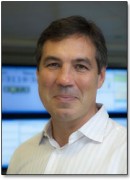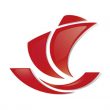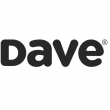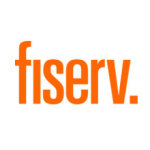BATS Chi-X Europe will bring down the cost of European ETFs says Mark Hemsley
BATS Chi-X Europe’s upcoming move into the European listings space will help bring a much-needed reduction in costs that could help to make the European ETFs market stronger, according to Mark Hemsley, chief executive at BATS Chi-X Europe.
“There’s a lot of friction in the ETF market caused by the current approach to listing,” he told Banking Technology. “ETF listings are often split across multiple national venues – so the market making liquidity is fragmented. Worse still, ETF listings on each national exchange are cleared and settled at separate CCPs and depositories – so if you happen to hold a long and a short position on two different venues, it’s very expensive to net those positions off. We are here to offer a better alternative.”
BATS Chi-X Europe was created in December 2011 when pan-European equities trading venues BATS Europe acquired rival Chi-X Europe. Together, the two venues had achieved a 22.3% pan-European market share by September 2013, according to figures provided by Thomson Reuters. In May 2013, BATS obtained regulated investment exchange status from UK regulator the FCA, allowing it to launch a listings business in the UK for the first time.
The venue plans to target ETFs exclusively for the time being, starting with BlackRock’s iShares ETFs, which will go live with the platform in November. The first ETFs will be the iShares MSCI Emerging Markets UCITS ETF, and the iShares MCSI World Minimum Volatility UCITS ETF, both as secondary listings. The business will be headed up by Guy Simpkin, European head of business development at BATS Chi-X Europe.
The main selling points of BATS’ new venture are twofold: first, the venue’s reputation as a low-cost option compared to competitors such as the London Stock Exchange and other national venues; and second, the fact that it is a pan-European venue with access to 15 different European countries. According to Hemsley, these factors should lead to improved consumer choice, and lower prices.
“If you trade equities on the LSE, for example, you are forced to use LCH. Clearnet,” he said. “If you come to BATS Chi-X Europe, you have a choice of four inter-operable clearing houses. We would like to bring that approach to ETFs. Added to that, the primary exchanges typically charge higher listing and trading fees, and charge more for market data, whereas we have committed to keep our prices flat for 2014.”
Market participants on the LSE have in fact been able to choose between LCH. Clearnet and SIX x-Clear, the post-trade business of the Six Swiss Exchange, since December 2008. Participants on Turquoise, the MTF owned by the LSE, can choose between LCH. Clearnet, SIX x-Clear, EMCF and Euroclear. A spokesperson for the LSE was keen to emphasise that the exchange does not see itself as a vertical silo nor does it align with businesses that argue for silos in the interoperability debate.
Nevertheless, Hemsley added that investors in countries such as Germany and France may not necessarily be interested in trading on a national specific exchange such as the UK’s LSE, but they might be more likely to trade with each other’s markets on a pan-European venue that pools the liquidity from all three countries.
“The primaries are cursed by history into only offering national products,” he said. “They are locked into vertical silos. What they’re not offering is a pan-European solution, especially when it comes to the post-trade challenges facing investors. It’s a very convoluted process you have to go through and it’s largely caused by the outdated historic need to go to a national exchange to list and trade.”
In the long-run, BATS Chi-X Europe is also hoping to grow the size of the European ETF market, which was still significantly smaller than its US counterpart at $420.9 billion versus $1.5 trillion respectively in May 2013. This discrepancy has long been pointed out by financial services observers, who note that the US and Europe have similar GDP figures ($15.7 trillion and $16.6 trillion respectively) while the US has a smaller population than the EU (314 million and 507 million respectively). For Hemsley at BATS, the future involves fungible ETF contracts that can be cleared anywhere the investor chooses and netted at a reasonable cost. It also involves a reduction in cost and complexity, as well as duplicate listings.
“At BATS Chi-X Europe, we try to find an area where there is a problem in the market and then we address it,” he said. “We started out in equities because the trading fees were too high. Now those fees have come down. It’s the same with ETFs – the listing fees are too high and the cost to clear and settle needs to come down. When you look at the future of our industry in Europe, ETFs will become a more popular investment choice, as we have seen in the US.”









































